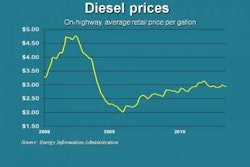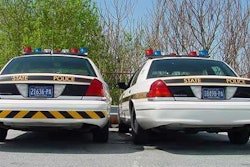EPA, Navistar formally end litigation
EPA, CARB move ahead with further SCR reviews
The legal battle Navistar waged against the U.S. Environmental Protection Agency since March 2009 formally came to an end Aug. 16 when the two parties jointly filed to withdraw the lawsuit and a federal appeals court agreed. The dismissal of the case followed a settlement agreement executed in June whereby EPA agreed to hold a workshop or hearing to consider questions surrounding the use of selective catalytic reduction (SCR) to achieve the maximum levels of oxides of nitrogen that EPA mandated for heavy-duty diesel engines beginning in January of this year.
Meanwhile, the California Air Resources Board already held a workshop in late July to make good on its own settlement with Navistar. Navistar, which relies on advanced exhaust gas recirculation (EGR) to comply with EPA’s 2010 regulations, had sued both EPA and CARB, alleging, among other things, that the guidance given SCR-reliant engine makers would allow trucks using SCR to operate effectively for long periods of time without emissions controls if the SCR system were inoperable or if there was no diesel exhaust fluid (DEF) being injected into the system.
 One of the questions Navistar has raised is whether new commercial vehicles using selective catalytic reduction to meet federal NOx emissions standards continue to operate effectively even when there is no diesel exhaust fluid being injected into the system.
One of the questions Navistar has raised is whether new commercial vehicles using selective catalytic reduction to meet federal NOx emissions standards continue to operate effectively even when there is no diesel exhaust fluid being injected into the system.At an air resources workshop in El Monte, Calif., Navistar representatives contended that independent test findings show new commercial vehicles that must contain DEF to meet federal NOx emissions standards continue to operate effectively when DEF is not present. At such times, Navistar said, the vehicles throw off levels of NOx as much as 10 times higher or more than when DEF is present.
The research cited by Navistar was conducted by EnSight, an independent environmental consulting firm, using two long-haul vehicles and one heavy-duty pickup, all of which used SCR. According to Navistar, EnSight’s research showed that when DEF was not present, there was little or no effect on the vehicles’ operations; this included long periods of time when the vehicles’ DEF tanks were empty or were refilled with water instead. Navistar said one truck tested appeared to operate indefinitely with water and as a result without any functioning SCR NOx control, and that the truck had accumulated more than 13,000 miles with its SCR NOx emissions control turned off.
“What we are doing is looking at tightening up SCR certification requirements and clarifying the guidelines so that manufacturers know exactly how to meet them,” says Annette Hebert, chief of CARB’s mobile source operations division. Hebert said CARB’s initial focus is on the time, speeds and mileage SCR trucks can operate once the DEF tank is empty. “We also want to make certain the trucks cannot operate when they are out of spec – if water has been placed in the DEF tank or the SCR system has been tampered with in any way,” she says. “Our goal is to minimize the time and speed a truck can operate and create driver inducements that are stringent enough to encourage them to keep DEF in the system and avoid any performance penalties.”
Strong rebuttal
John Mies, vice president of corporate communications for Mack Trucks and Volvo Trucks North America, responded strongly to Navistar’s claims. “Every single thing we’ve done – including the DEF inducement strategy – was done with the full cooperation, knowledge and approval of both the EPA and CARB,” said Mies.
“We learned a few weeks ago – not even six months after the implementation date for the new technology – that the regulations we followed in good faith were to be reconsidered,” Mies said. “And why? In large part because of concerns being raised by a single competitor. A competitor that says it is concerned about the environment, but whose U.S. ’10 engines will emit 2½ times the 2010 NOx standard and are only certifiable with emissions credits.”
Mies openly questioned Navistar’s motivation in raising SCR compliance issues with EPA and CARB, noting that the “competitor” challenging current SCR standards:
• Said it was ready for the new standards, yet lobbied for a delay in implementation, and when that failed, resorted to lawsuits against the regulators;
• Apparently believes that most of its customers, and the trucking industry as a whole, are “hell-bent” on illegal circumvention of emissions controls; and
• Has been able to compete in the market this year only by selling thousands of pre-2010 engines.
“The fact is that a Mack or Volvo truck running at 0.2 grams is and will continue to be much better for the environment than a Navistar truck running at 0.5 grams – and no amount of changes to the inducement strategies will change that,” Mies said.
Jack Allen, president of Navistar’s North American truck group, countered that truck owners are paying a substantial price to comply with 2010 NOx requirements. “They, and the public, deserve to know that the new equipment they are purchasing actually works as promised to curb pollution,” he said. “It’s obvious, however, that these trucks can operate effectively without liquid urea, and that under these and other conditions, SCR NOx emission control is turned off. We’re calling on the EPA and CARB to assure that all vehicles, not just ours, work when they are supposed to be working.” – Jack Roberts
IN BRIEF
* Navistar Financial Corp. signed an agreement for a one-year renewal of a $500 million dealer floor plan funding facility.
* The NAFA Fleet Management Association formed the NAFA CARB Advisory Council, a new subcommittee of NAFA’s Fuels & Technology Advisory Council, to provide input to both NAFA and the California Air Resources Board on regulatory matters that impact fleet managers in California.
* Henry Bell was promoted to global president of Fontaine Fifth Wheel, responsible for global OEM relations, strategic sourcing and product development.
* Great Dane Trailers made Transtex Composite’s Maximum Flex Skirt its standard offering to customers who choose aerodynamic components on their trailers.
* ArvinMeritor Inc. announced the sale of its Body Systems business to an affiliate of Inteva Products LLC, a wholly owned subsidiary of The Renco Group Inc., for about $35 million.
* The Work Truck Show will return to Indianapolis for the next two years. The Work Truck Show 2011 runs March 8-10 at the Indiana Convention Center. The 47th Annual National Truck Equipment Association Convention, educational sessions and Green Truck Summit kick off March 7.
* Trojan Battery Co., a manufacturer of deep-cycle batteries, announced that Idle Free Systems Inc. selected the Trojan OverDrive AGM 31 battery to power the Idle Free Electric APU for trucks.
* FleetPride’s acquisition of Heavy Vehicle Parts Inc. includes facilities in Odessa and Midland, Texas, bringing the aftermarket parts distributor’s number of Texas locations to 19.
50,000 Freightliners and counting for Max Fuller
Few trucking executives buy 50,000 trucks over the course of their careers, but Max Fuller has accomplished something more unusual. On Aug. 5, the co-chairman and chief executive officer of Chattanooga, Tenn.-based U.S. Xpress took delivery of his 50,000th truck of a single make – Freightliner. Fuller began buying Freightliners in the mid-1970s when he was purchasing equipment for his father’s trucking company and continued to buy them when he and Patrick Quinn launched U.S. Xpress in 1985.
 U.S. Xpress CEO Max Fuller received his 50,000th Freightliner during an Aug. 5 ceremony. Pictured, from left, are Martin Daum, president and CEO of Daimler Trucks North America; Fuller; and Mark Lampert, DTNA senior vice president of sales and marketing.
U.S. Xpress CEO Max Fuller received his 50,000th Freightliner during an Aug. 5 ceremony. Pictured, from left, are Martin Daum, president and CEO of Daimler Trucks North America; Fuller; and Mark Lampert, DTNA senior vice president of sales and marketing.In a ceremony at U.S. Xpress’ headquarters, Fuller officially took possession of the 2010 Freightliner Cascadia 72-inch sleeper powered by a Detroit Diesel DD15 engine. Martin Daum, president and CEO of Daimler Trucks North America, also presented Fuller with a memento of the occasion – a Freightliner etched into a block of crystal. “It might be the only Freightliner you ever get for free,” Daum quipped as he handed the trophy to Fuller. Closing out the ceremony, Fuller handed the keys to the 2010 Cascadia to its driver, James Waldo, who has worked for U.S. Xpress and Southwest Motor Freight for 38 years.
The 2010 Cascadia that U.S. Xpress received at the ceremony is one of about 30 Freightliners the carrier is using equipped with selective catalytic reduction for emissions control. The trucking company has 300 more on order. n











